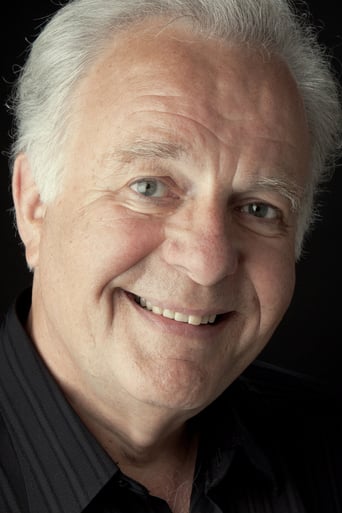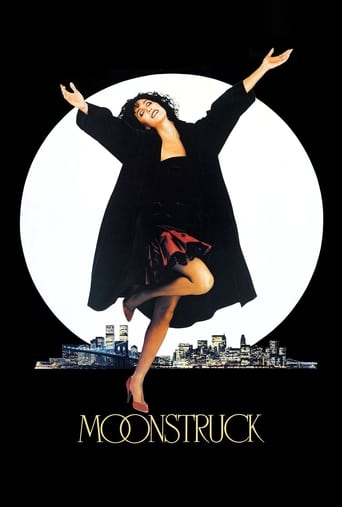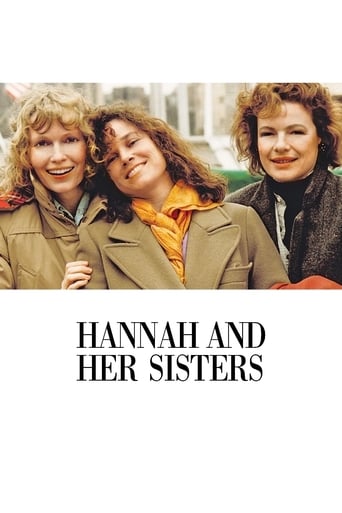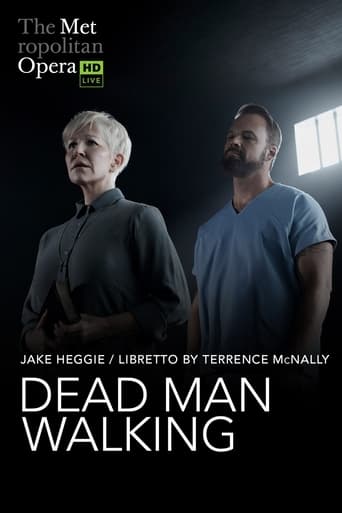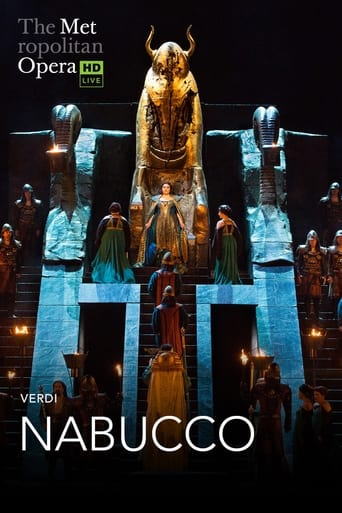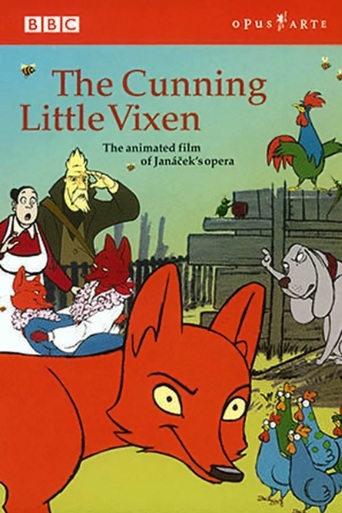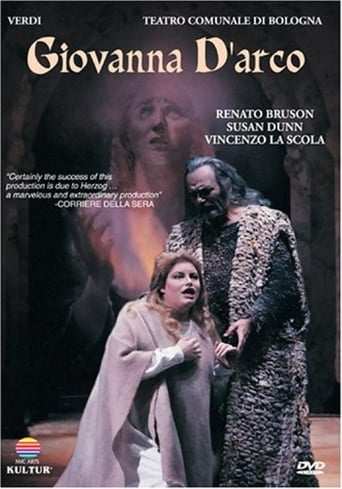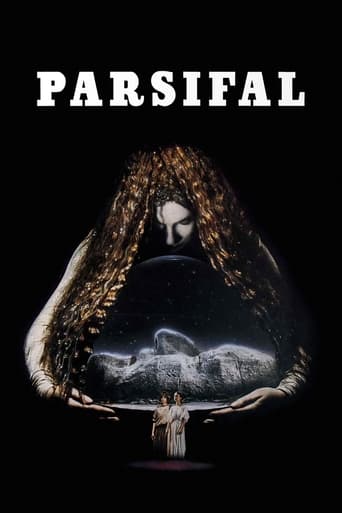
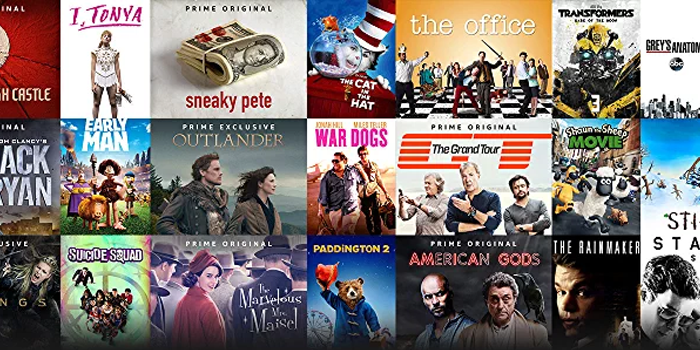
Parsifal (1982)
A psychological interpretation of the opera mixing in references to the history of Germany, Wagner’s life, German literature and philosophy. The action is centered on Wagner’s death mask. Kundry is the main character – one might read the film as the story of her redemption rather than that of Amfortas.
Watch Trailer
Cast


Similar titles
Reviews
Very very predictable, including the post credit scene !!!
Boring
Simple and well acted, it has tension enough to knot the stomach.
It’s sentimental, ridiculously long and only occasionally funny
This very peculiar setting of Wagner's last opera definitely grew on me. When I first saw it, I was somewhat annoyed by many of the films surrealistic images, and felt that far too much was superimposed upon the story. However, if you can put up with a fair amount of rather recherché "gimmicks," I think you will find that the film DOES manage to capture the very strange, other-worldly atmosphere of the opera, and that there are moments which are particularly fine.Personally, I never really understood the role of Kundry until I saw how Edith Clever portrayed her. Her performance (a lip-synchronized mime of the singing voice of Yvonne Minton) is nothing short of dazzling, from end to end, and alone justifies the hours it takes to absorb the film.Another reason to delight in this film is that it captures the spectacular interpretation of Robert Lloyd of the crucial role of Gurnemanz, one which Lloyd has performed to a crisp at opera houses throughout the world. I have been privileged to enjoy him in the role of Gurnemanz on the stage of the Metropolitan Opera several times, and the lusciousness of his voice, and the warm, fatherliness of his interpretation of this noble character really needed to be preserved, as did his performance in the character's two major monologues, the Karfreitag scene and the recounting of the prophecy in Act 1.The version I have seen was a videotape made for America, and so there were subtitles which, alas, could not be done away with. This is especially unfortunate because the translation used is very inaccurate and forces an extremely Christian interpretation on a film which is already forcing layers of interpretation on the opera. This seemed to me to be quite contrary both to Wagner's clear AVOIDANCE of Christianity, and his very deliberate attempt to "generalize" the Christian elements of the story. (See footnote with spoiler at the end of this review.) I find it nearly impossible, when viewing a film with subtitles, to keep from absorbing them, and strongly recommend that, if in the DVD versions you have the ability to turn the subtitles off, you do so, and instead, if the opera is unfamiliar to you, that you read the libretto carefully beforehand.The bottom line is that there is much in the film which I dislike, and would just as soon have seen done differently...but it has risen steadily in my estimation over the years since I first saw it, and I find myself drawn to enjoy it again and again.__________________________________________________________________FOOTNOTE CONTAINING A SPOILER: A good example would be Kundry's famous line, "I saw him...him...and laughed." This gets translated, in the subtitles, for reasons which escape me, as "I saw the Savior's face." It is especially irritating to me, because throughout the libretto, Wagner very deliberately and carefully refers to this unseen character WHO NEED NOT BE THE BIBLICAL Jesus as "der Heiland," i.e., the German for "The Healer"--a reference to the wound of Amfortas, and to all wounds and maladies and the need for healing.
N.B.: Spoilers within. Assigning an artistic director to an operatic production naturally and inevitably means you are going to get a piece of that director's mind. But directing a Wagner opera is an especially tricky task, as he was perhaps the most explicit opera composer in terms of what things should look like and how they should unfold. Hans-Jurgen Syberberg loads this filming of "Parsifal," Wagner's final masterpiece, with enough extraneous ideas to cause it to nearly burst at the seams. You get more than a piece of the director: you get the whole fatted hog and then some. Syberberg is to be admired for his penchant for tearing back the covers on the uglier aspects of German history. But does it work to meld that desire to a Wagner opera already brimming with its own concepts? The scenes with the knights of the Holy Grail in Acts I and III are especially laden with visual allegory and symbolism. These are drawn come from Wagner's own time, from long before, and go well beyond. If you know what these things mean, they can enrich Syberberg's vision for you (but not necessarily enhance Wagner's vision); if you don't know what they mean, they're simply confusing, if not annoying. I won't bother uncoiling the plot of the opera here. Suffice it to say it is a typical Wagnerian synthesis of diverse elements, in this case a blending of the Holy Grail legend with the principles, practices, and pageantry of Christianity. The theme of redemption plays the main role here, as in nearly every Wagner opera.I personally had to sweat to get through Syberberg's first act (amidst my jarring acclimation, the music saved the day). But Act II picks up the pace. Here we meet Klingsor, the evil sorcerer, out to entrap the wandering "innocent fool" Parsifal. The greatest seductress of them all, Kundry, will be used to entice him to the dark side. After an initial dalliance with more symbols, these get stripped away, and the long, gorgeous, transformational duet between young fool and temptress really takes off. Finally the film starts working a genuine magic, and it is chiefly due to Syberberg's choosing to set things naturally and simply. Suddenly the acting starts to work (the expressive actress Edith Clever and the luscious soprano of Yvonne Minton team to create a wondrous Kundry); suddenly the music seems to come to life and make vivid the inner turmoil of the two characters. The camera work stays simple and quietly fluid. In other words, Wagner is allowed to tell his story more on his own terms. And it works beautifully. For me it was the most engrossing part of the film.With the re-entrance of the knights in part 2 of Act III, the weird extraneous symbolisms unfortunately creep back in. Some other loony Syberberg ideas: using a huge Wagner death-mask as a major set-piece (causing the composer's protuberant proboscis to loom comically large); dressing the Act III knights in all manner of costumes, wigs, and makeup (what is the director saying? That the knights are a bunch of buffoons? That they express multiple or timeless layers of significance beyond their surface functions? It's anybody's guess); the insertion just after the incredibly touching baptism of Kundry by Parsifal of rear-projection footage of the conductor rehearsing, in modern-day realism, his orchestra in the studio (this completely snapped my dramatic thread, requiring a few minutes to regroup); the complete avoidance of having any time pass between Acts II and III (when we meet the knight and "narrator" Gurnemanz again, he should be an old, old man, and Parsifal should re-emerge as a world-weary but wiser middle-aged man); but certainly the most bizarre stroke is to split the Parsifal character into male/female components. Some find this the most brilliant stroke. No doubt I can credit Karin Krick, who plays "Parsifal 2," with acting of strength and dignity (she also happens to be the best lip-syncher of the whole cast). But please...Wagner's conception of Parsifal is already so complex. His growth from a completely innocent boy who knows nothing of his past, to his breakthrough realization in Act II of what Amfortas's eternal wound means and how it has become his own, to his return as the great Redeemer of Act III this is the journey of a masterfully constructed character. The bi-sexual emphasis is just gimmicky and absurd. (And what's with this nonsense about a homoerotic Gurnemanz and Parsifal?? Can't we just accept a mentor/apprentice relationship, which is marvelously reversed in Act III?) The Monte Carlo Philharmonic under Armin Jordan plays with passion and beauty (though the chorus is disappointing). But after watching this film I only wanted to whip out my Solti-led recording (HIGHLY recommended) and get my Wagnerian bearings straight again. The film experience for me ranged from bizarre to entertaining to infuriating. To Syberberg's credit, he's created a visually arresting work, and he certainly offers a unique take on an important opera. But instead of sticking to "Parsifal," he seems to have wanted to bring in all things Wagnerian: the man, the life, the enormous influence...all of it in crude symbolic code. "Parsifal" the opera is already full of weighty symbolism: the Grail, the Spear, the Holy Sacraments, baptism, Amfortas's ever-bleeding wound, Klingsor's self-castration, the Kiss, Kundry's Curse, and on and on. This is not to mention the *musical* symbolism sounding constantly in the score, in the form of Wagner's leitmotif system. "Parsifal" itself is one huge symbol! Getting back to my first-paragraph question, Syberberg's whole hog is all way too much for me. But if this project sounds like something to tickle your fancy, then go for it. I won't recommend just staying away from this; you may find yourself heartily satisfied. Or if you need something to crack your Wagner barrier, try it...but please, please, don't stop here. "Parsifal" is in a late, very ripe league of its own.
Today (1994), the "Recommendations" associated with Parsifal was: "If you like this title, we also recommend... Indiana Jones and the Temple of Doom (1984)". Well, if you liked "Indiana Jones", you may not necessarily enjoy this movie.A rather laborious staging. All those supposedly clever references about nazism, sexual ambivalence and all that are heavily pounded upon, although they do not present the slightest interest.Still, the libretto's poetry is intense and beautiful, and the music is probably superb (the soundtrack of the Brussels cinematheque copy is in tatters)
It must be assumed that those who praised this film ("the greatest filmed opera ever," didn't I read somewhere?) either don't care for opera, don't care for Wagner, or don't care about anything except their desire to appear Cultured. Either as a representation of Wagner's swan-song, or as a movie, this strikes me as an unmitigated disaster, with a leaden reading of the score matched to a tricksy, lugubrious realisation of the text.It's questionable that people with ideas as to what an opera (or, for that matter, a play, especially one by Shakespeare) is "about" should be allowed anywhere near a theatre or film studio; Syberberg, very fashionably, but without the smallest justification from Wagner's text, decided that Parsifal is "about" bisexual integration, so that the title character, in the latter stages, transmutes into a kind of beatnik babe, though one who continues to sing high tenor -- few if any of the actors in the film are the singers, and we get a double dose of Armin Jordan, the conductor, who is seen as the face (but not heard as the voice) of Amfortas, and also appears monstrously in double exposure as a kind of Batonzilla or Conductor Who Ate Monsalvat during the playing of the Good Friday music -- in which, by the way, the transcendant loveliness of nature is represented by a scattering of shopworn and flaccid crocuses stuck in ill-laid turf, an expedient which baffles me. In the theatre we sometimes have to piece out such imperfections with our thoughts, but I can't think why Syberberg couldn't splice in, for Parsifal and Gurnemanz, mountain pasture as lush as was provided for Julie Andrews in Sound of Music...The sound is hard to endure, the high voices and the trumpets in particular possessing an aural glare that adds another sort of fatigue to our impatience with the uninspired conducting and paralytic unfolding of the ritual. Someone in another review mentioned the 1951 Bayreuth recording, and Knappertsbusch, though his tempi are often very slow, had what Jordan altogether lacks, a sense of pulse, a feeling for the ebb and flow of the music -- and, after half a century, the orchestral sound in that set, in modern pressings, is still superior to this film.


